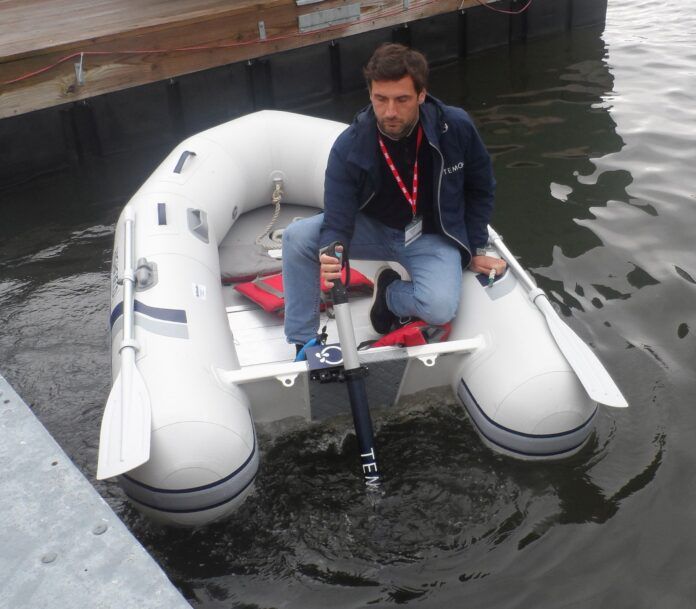I’ve borrowed my dockmate’s electric dinghy. I bought my wife an e-bike and I know she would like an electric motor. Small gas motors can smell the fear of those that lack confidence with a manual choke. Gas motors are loud and you have to handle gas. My last boat kept her tender on davits and we always thought it would be neat to just plug in at night. The range is enough to commute from the harbor to the nearest dinghy dock, or from at anchor to the nearest beach. But what about the longer explorations to hidden beaches and snorkeling spots? What about small sailboats that will use the motor not just in and out of the harbor, but also when becalmed? Clearly, the best choice depends on your needs, so let’s see how they stack up.
To continue reading this article or issue you must be a paid subscriber. Sign in
Subscribe to Practical Sailor
Get the next year of Practical Sailor for just $34. And access all of our online content - over 4,000 articles - free of charge.
Subscribe today and save 42%. It's like getting 5 months FREE!






































Have had a Torqeedo Travel 1103 for nearly three years now and it’s worked perfectly with our 10-foot RIB (knock wood). Torqeedo released a solar panel connector cable last year, making charging it off grid much easier. Is it lighting fast? No, but I certainly knew that going in. Gets us back and forth to dingy docks and hasn’t let us down gunkholing yet. I know a guy that has one attached to his small sailboat and he claims he can get 4-6 hours out of it on a single charge, using very low wattage. Not sure I’d ever attempt that, but for a RIB it’s perfect.
Here’s another vote for the Torqueedo Travel 1103. I’ve had mine immersed in salt water twice- once to a depth of 3 meters. Both times it just took a quick fresh water rinse, a squirt of CRC electronics cleaner into the connectors, and a few shots of WD40 into the swivel points and it powered right up. Torqueedo’s advertised IP67 is legit.
What about the new to release Mercury electrics??
I have had a Torqueedo Travel for over 5 years and love it. I originally bought it for my J24 to power it in and out of the harbor for racing and it was great for this function pushing the boat over 4 knots easily and with a 3-4 mile range at that speed. More if run slower. I liked it so much that I sold my gas outboard for the dinghy and now use it for my inflatable when I cruise on my Catalina 400. No gas on cruises and works awesome for bringing the family back and forth to the beach and town. Last year spent a week in Newport on a mooring and never had to charge going back and forth all day. Plus, you can take the battery off separately and you don’t have to horse a heavy gas engine off your transom and onto the dink every port you go to. I can step from the swim platform to the dink with the motor in one hand. Now if you were taking trips miles away on the dink, or want to plane it out, it would not be a good choice, but I cannot recommend it enough for a coastal cruiser going port to port. And I don’t have to bring smelly gas on my sailboat OR mess with ethanol issues.
We’ve given our Epropulsion Spirit a good workout the past 3 years, impressed with its ability to push hard against some pretty strong tides for quite a distance. Rather than speed and mileage, the LCD screen tells you how many hours you can go on for at the present throttle setting, which we’ve found to be useful. We’ve cruised a lot in places where the idyllic upper reaches of rivers can be explored in peace & quiet. I hate having gas on a sailboat, and in many places we go gas is hard to find anyway. Charging has never been a problem; we plug it into the inverter whenever the engine is running or when the solar has topped up the batteries. We’ve particularly enjoyed being able to quickly separate the battery from the leg, making it so much easier to carry the tender up the beach or stow the unit onboard with the weight better distributed.
Torqueedo works until it doesn’t. Then you are literally up the creek without a paddle or tech support. My 1003 worked for a couple of years, then one day it didn’t. Tech support took forever to get ahold of and didn’t have many suggestions for diagnosing it. They thought it was the throttle after I checked some pin voltages. I bought a new throttle and it didn’t help. I finally saw someone up the dock with one and asked to borrow the battery. Sure enough, that was it. Torqeedo said they had a recall on them, but wouldn’t send me a loaner or replacement until I mailed mine in for testing, which is a real hassle since you need a special box and carrier due to the lithium batteries. When they finally tested it, months later, the dealer/service guy said the recall was only for water intrusion, and mine was just faulty. It held a complete charge in the days and weeks before it stopped working. The service guys said the batteries are good for about 4-5 years. A new one was $1000. So how much gas can you buy for $1K over 4 years? I don’t know about anyone else, but I never spent $250/year on dinghy fuel. Maybe 10-20% of that. So if the battery is only good for 4-5 years as their service agent said – it completely blows the economics of something that is already a lot more expensive than a gas equivalent. Not to mention the 12 months without it working while I went ’round and ’round with them. Luckily I had another small outboard to use while playing with it. No more Torqueedo for me – ever.
Our 3 year old Torqeedo replaced a 4 stroke Mercury that my wife just couldn’t start, so the electric outboard is the perfect answer. So far it has been fault free, allows silent travel – I hate the din from a petrol outboard and I can recharge on board from my 12v house battery bank while my solar panel tops them up. No stink of petrol, no annual servicing costs, far easier to fit on and off the tender and the range is fine for typical yacht to shore (pub) trips. If you have your petrol outboard Dealer serviced every year you will pay for a new battery when the time comes. There’s no going back for me.
I had a dockmate that got a free Torqueedo from a freecycle bin. All it needed was a new battery and a connector. He used it for a few months, it worked fine, and then he returned it to the freecycle bin, since he was comfortable rowing his hard dink and it seemed like a complication to him. Different strokes.
It seems to come down to whether the user is a small engine whisperer, whether they have learned the gas additive and fuel management tricks from PS testing, and whether they value quiet, or power and range more. No single answer. I get along very well with gas motors, but my spouse less so. Many need more power or range, but no one likes the noise. It’s a puzzlement.